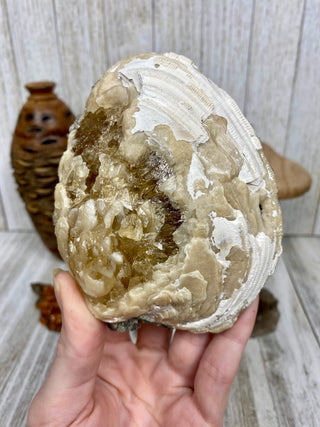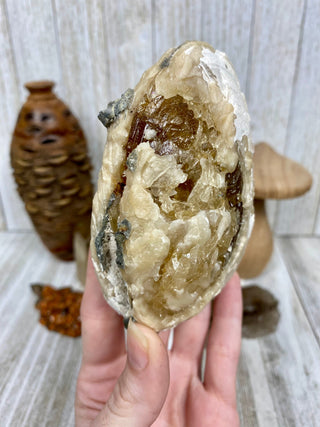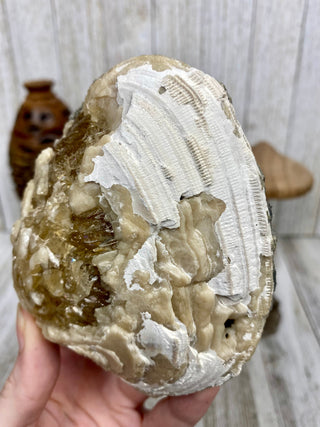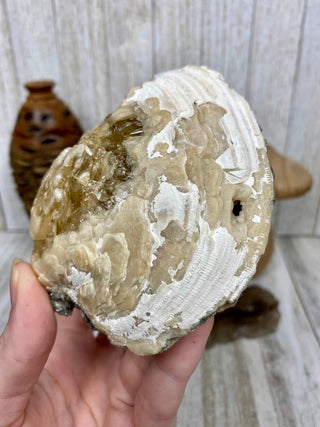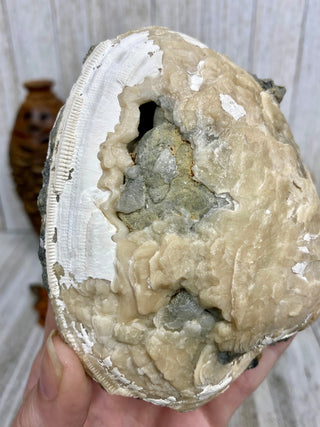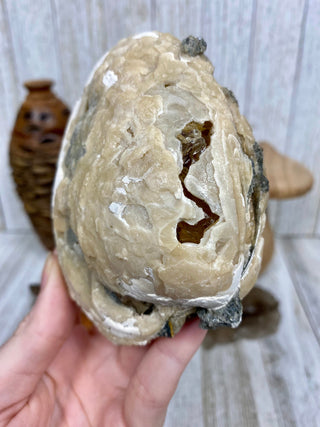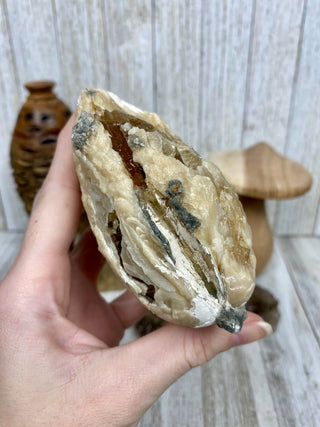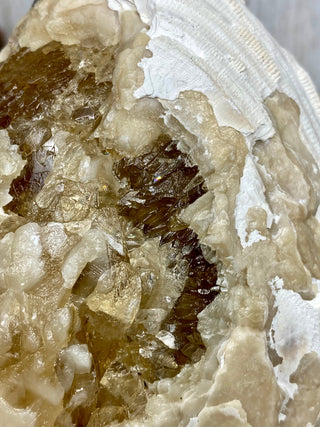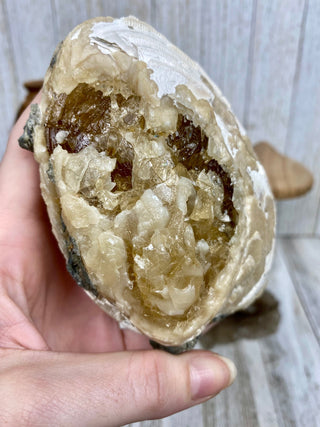Fossil Clam Shell filled with Calcite from Fort Drum, Florida, USA, with solidly packed Calcite, intriguing triangular formations, and a base of layered shells giving a nice picture of the original location.
Measurements: 527g, 11cm x 9cm x 5cm
The fascinating transformation of aragonite-based clam shells into Calcite-filled fossils unfolds through a lengthy process deeply rooted in geological and chemical dynamics. This phenomenon begins with the dissolution of Calcite from the original fossil sea shells. Over time, this dissolved Calcite re-crystallizes within the interiors of the clam shells, eventually forming honey-colored, crystalline structures that fill the shells. This natural process results in exquisitely fossilized marine shells, their interiors densely packed with Calcite, showcasing a remarkable geological journey from living organisms to mineralized fossils.
These shells once belonged to Mercenaria permagna, a clam species that thrived along the Southeastern coast of the United States during the Pleistocene period, from about 2.58 million to 11,700 years ago. The specific conditions and sequences that lead to the calcification of these clam shells can vary, highlighting the complexity and diversity of natural processes at work. Through understanding these processes, researchers gain insight into the environmental and geological conditions of the Pleistocene era, as well as the intricate mechanisms behind fossilization and mineral deposition.
Fossil Clam Shell filled with Calcite from Fort Drum, Florida, USA, with solidly packed Calcite, intriguing triangular formations, and a base of layered shells giving a nice picture of the original location.
Measurements: 527g, 11cm x 9cm x 5cm
The fascinating transformation of aragonite-based clam shells into Calcite-filled fossils unfolds through a lengthy process deeply rooted in geological and chemical dynamics. This phenomenon begins with the dissolution of Calcite from the original fossil sea shells. Over time, this dissolved Calcite re-crystallizes within the interiors of the clam shells, eventually forming honey-colored, crystalline structures that fill the shells. This natural process results in exquisitely fossilized marine shells, their interiors densely packed with Calcite, showcasing a remarkable geological journey from living organisms to mineralized fossils.
These shells once belonged to Mercenaria permagna, a clam species that thrived along the Southeastern coast of the United States during the Pleistocene period, from about 2.58 million to 11,700 years ago. The specific conditions and sequences that lead to the calcification of these clam shells can vary, highlighting the complexity and diversity of natural processes at work. Through understanding these processes, researchers gain insight into the environmental and geological conditions of the Pleistocene era, as well as the intricate mechanisms behind fossilization and mineral deposition.
